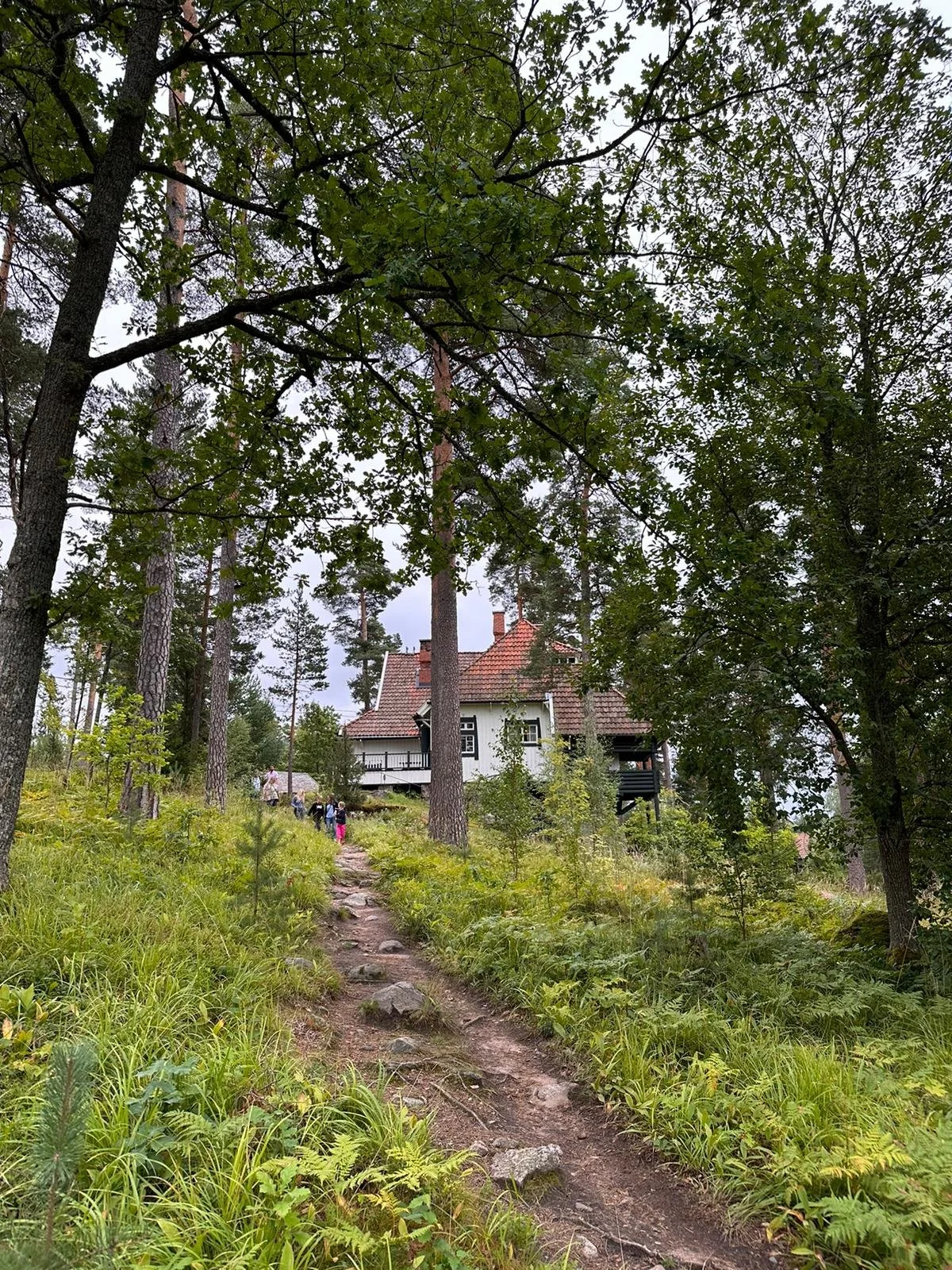Ainola
Jean Sibelius and his family, his wife Aino and their five daughters, lived in Ainola from 1904 to 1969. It is situated 38km north of Helsinki by the side of Lake Tuusula. The first floor was built first with the second floor being added in 1911. Jean and Aino Sibelius are buried in the garden.
The Sibelius family had a reasonably self-sufficient lifestyle at Ainola with Aino growing berries, fruit and vegetables for the family. The notes from the tour state that water pipes and plumbing were not installed until the 1960s.
The library was Sibelius’ favourite room, the tour notes state that to the left of the door was the corner where Sibelius smoked cigars. The grand piano was given to Sibelius on his 50th birthday.
Green fireplace in the dining room.
Green fireplace in the dining room.
In the dining room Sibelius requested that a green fireplace be built. The tour notes state that Sibelius ‘had a condition called synesthesia (the production of a sense impression relating to one sense or part of the body by stimulation of another sense or part of the body), hence colours had a special meaning for him. Each colour symbolized a different chord, the green colour being the F chord’.
In 1972 Ainola was sold to the Finish government, and it was opened as a museum two years later.
www.wikipedia.org/wiki/Aino_Sibelius
Sibelius Symphony no. 2
There is an excellent podcast that is available called Sticky Notes. This is from Sticky Note’s website. ‘Sticky Notes is a classical music podcast for everyone. Whether you are a beginner just looking to get into classical music but don't know where to start, or a seasoned musician interested in the lives and ideas of your fellow artists, this podcast is for you. The show will feature interviews with the top artists of today, in-depth looks at specific pieces from the repertoire, and deep dives into each era of classical music, plus much more’.
One episode I listened to covered Sibelius’ 2nd Symphony. What follows is some of what was mentioned on the podcast to which I have added a few additional details. Sibelius commenced writing this symphony in 1901 and it was completed in 1902. Sibelius said of this symphony “My second symphony is a confession of the soul”. It was premiered by the Helsinki Philharmonic Society on 8th March 1902. After three performances, Sibelius made some revisions. Some critics at the time did not review this symphony favourably.
First movement - an innovative movement which is 15 minutes long. A rising three-note motif is heard at the start of the work and this motif, in many forms is heard throughout the symphony and it is only at the climax of the final movement that the full theme is heard. This movement is pastoral in nature and it does not necessarily follow conventional forms. There are occasional outbursts and there is a conflict between naivete and dramatic moments. There are no real contrasting themes. The presented stated that in Sibelius’ music one should follow the motifs not the form.
Second movement - this movement is modernistic in style. It is a story about Don Juan. Sibelius wrote “Don Juan. I was sitting in the dark in my castle when a stranger entered. I asked who he could be again and again - but there was no answer. I tried to make him laugh but he remained silent. At last the stranger began to sing - the Don Juan knew who it was. It was death”. There is a profound sense of loneliness in this movement and the silences that Silbelius uses create a dramatic effect. The lament is played by the bassoon.
Third movement - the third movement bristles with energy and anxiety. The trio section features an oboe solo which is accompanied by clarinets and horns and after this, the scherzo is played again. However, this is followed by a return of the trio section. There is no pause between the third and fourth movements.
Fourth movement - in this movement all of the themes are laid out and repeated. As a result, there is a degree of repetition in this symphony. However, this heightens the sense of anticipation for something that the listener did not know was coming. Finally the themes have resolution after finally attaining D major. When playing this symphony the orchestra must carefully place the climax.
There are three themes in this symphony, firstly one that is soaring and ecstatic. Secondly, another them has a transitory character as it has a meandering quality. And lastly, the last theme is mysterious, nervous, full and dread and anticipation.











